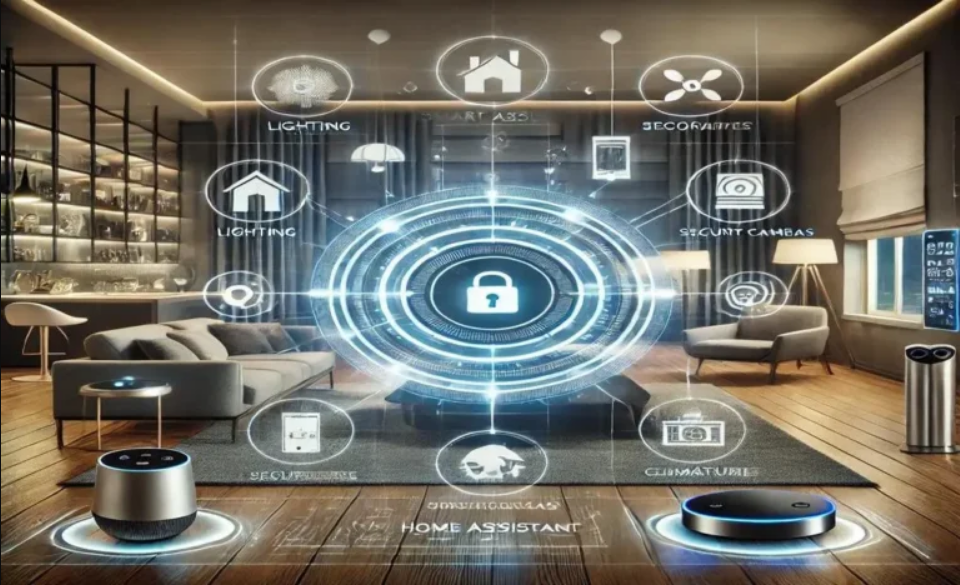smart speakers

In the era of smart homes and interconnected devices, Home Assistant Setup has become one of the most popular topics among technology enthusiasts and homeowners alike. Home Assistant, an open-source smart home platform, allows you to control, monitor, and automate various devices within your home — all from a single, centralized dashboard. Whether you’re just getting started with smart home automation or looking to expand your existing setup, Home Assistant offers endless possibilities for customization, privacy, and control.
What Is Home Assistant?
Home Assistant is an open-source platform designed to bring all your smart devices together under one interface. Unlike cloud-based smart home systems, Home Assistant runs locally on your hardware — meaning your automations work even when your internet is down smart speakers. It’s highly secure, customizable, and supports thousands of integrations, making it one of the most flexible platforms for home automation.
Why You Should Use Home Assistant
Before diving into the Home Assistant Setup, it’s important to understand why so many people prefer it:
-
Local Control: Your automations and data stay within your home network, ensuring privacy and reliability.
-
Wide Compatibility: Works with devices from brands like Philips Hue, Google, Amazon, Nest, TP-Link, and more.
-
Custom Automations: Create unique automation scripts tailored to your lifestyle.
-
Cost-Effective: The software is free, and it can run on affordable hardware like a Raspberry Pi.
Step-by-Step Guide to Home Assistant Setup
1. Choose Your Hardware
The most popular and affordable option is the Raspberry Pi 4 (with at least 4GB RAM), but you can also install Home Assistant on a virtual machine, Docker, or dedicated server.
2. Download Home Assistant OS
Visit the official Home Assistant website and download the appropriate Home Assistant Operating System (HAOS) image for your device.
3. Flash the Image to Your SD Card
Use tools like Balena Etcher or Raspberry Pi Imager to flash the downloaded image onto your SD card. Once done, insert the SD card into your Raspberry Pi.
4. Connect to Your Network
Plug in your Raspberry Pi and connect it to your Wi-Fi or Ethernet network. Give it a few minutes to boot up.
5. Access the Home Assistant Dashboard
Open a web browser and go to:http://homeassistant.local:8123
You’ll see the Home Assistant Setup Wizard — a guided process for creating your account and configuring basic settings.
6. Add Integrations
Once logged in, go to Settings → Devices & Services and click on “+ Add Integration.” You can connect your smart bulbs, plugs, cameras, thermostats, and more.
7. Create Automations
Home Assistant allows you to set up automations easily using its Automation Editor.
Example:
-
Trigger: The front door opens.
-
Condition: It’s after 7:00 PM.
-
Action: Turn on the hallway light.
8. Customize Your Dashboard
Home Assistant’s Lovelace UI lets you design personalized dashboards. You can display live camera feeds, weather data, device statuses, and even energy usage charts.
Common Setup Issues and Solutions
-
Cannot Access Dashboard: Make sure your Raspberry Pi and computer are on the same network.
-
Device Not Detected: Check if the integration is supported or update Home Assistant to the latest version.
-
Slow Performance: Use a high-quality SD card or switch to an SSD for faster performance.
Expanding Your Smart Home
Once your Home Assistant Setup is complete, you can add advanced features like:
-
Voice Control: Integrate Alexa, Google Assistant, or Siri.
-
Energy Monitoring: Track power usage in real time.
-
Security Automations: Receive instant alerts for motion or door sensors.
-
Remote Access: Use the Home Assistant Cloud (Nabu Casa) to control your home securely from anywhere.
Final Thoughts
Setting up Home Assistant may seem technical at first, but it’s surprisingly easy once you understand the basics. The platform offers unmatched flexibility, security, and performance for smart home automation enthusiasts.
With the right Home Assistant Setup, you can create a smart, responsive home that adapts to your lifestyle — from adjusting lighting and temperature automatically to securing your home and saving energy effortlessly.
If you’re ready to take your smart home to the next level, start your Home Assistant Setup today and experience the power of true automation.